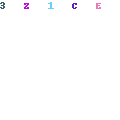SCES692D June 2008 – February 2016 SN74AVC2T245
PRODUCTION DATA.
- 1 Features
- 2 Applications
- 3 Description
- 4 Revision History
- 5 Pin Configuration and Functions
-
6 Specifications
- 6.1 Absolute Maximum Ratings
- 6.2 ESD Ratings
- 6.3 Recommended Operating Conditions
- 6.4 Thermal Information
- 6.5 Electrical Characteristics
- 6.6 Switching Characteristics: VCCA = 1.2 V
- 6.7 Switching Characteristics: VCCA = 1.5 V ± 0.1 V
- 6.8 Switching Characteristics: VCCA = 1.8 V ± 0.15 V
- 6.9 Switching Characteristics: VCCA = 2.5 V ± 0.2 V
- 6.10 Switching Characteristics: VCCA = 3.3 V ± 0.3 V
- 6.11 Operating Characteristics
- 6.12 Typical Characteristics
- 7 Parameter Measurement Information
- 8 Detailed Description
- 9 Application and Implementation
- 10Power Supply Recommendations
- 11Layout
- 12Device and Documentation Support
- 13Mechanical, Packaging, and Orderable Information
11 Layout
11.1 Layout Guidelines
To ensure reliability of the device, following common printed-circuit-board layout guidelines is recommended.
- Bypass capacitors should be used on power supplies.
- Short trace lengths should be used to avoid excessive loading.
- Placing pads on the signal paths for loading capacitors or pullup resistors to help adjust rise and fall times of signals depending on the system requirements.
11.2 Layout Example
 Figure 7. Recommended Layout Example
Figure 7. Recommended Layout Example